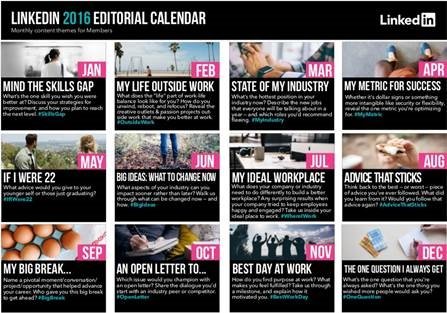8 Things Your Competitors Are Doing Better on Social Media
 By Ted Birkhahn, Partner & President, & Marian Daniells, Sr. Account Executive, PeppercommFor CEOs and other senior-level executives, being relevant on social media is hard. There can be ample risk – real or perceived – that keeps these busy professionals from adopting best practices and providing real value to their audiences across social media channels. The result sometimes is a watered-down approach that fails to engage or inspire an audience much like a traditional publisher would.We know that getting it right on social media can have profound impacts, many of which have been well documented (here, here and here). Outcomes can include positive changes to one’s reputation and trust, not to mention the ability to influence others to adopt a brand’s purpose or get behind keystone initiatives.To better understand this dilemma, we compiled in-depth research about what executives are doing on social media. We evaluated the profiles of 65 leaders at companies spanning all industries. And we extracted some best practices. Here’s how some of the biggest thought leaders are rocking their social media presence:They are personal. These leaders are sharing interesting articles, selfies, and shout outs to reporters, peers and celebrities. And they intuitively know to balance these with internal or company announcements. Because thought leaders are a part of their businesses; they’re not interchangeable.They have an editorial calendar. Did you know that LinkedIn has its own editorial calendar, its own selection of monthly themes? When LinkedIn Pulse bloggers write along these themes and use the relevant hashtags, the content is easier to find, and more widely read.
By Ted Birkhahn, Partner & President, & Marian Daniells, Sr. Account Executive, PeppercommFor CEOs and other senior-level executives, being relevant on social media is hard. There can be ample risk – real or perceived – that keeps these busy professionals from adopting best practices and providing real value to their audiences across social media channels. The result sometimes is a watered-down approach that fails to engage or inspire an audience much like a traditional publisher would.We know that getting it right on social media can have profound impacts, many of which have been well documented (here, here and here). Outcomes can include positive changes to one’s reputation and trust, not to mention the ability to influence others to adopt a brand’s purpose or get behind keystone initiatives.To better understand this dilemma, we compiled in-depth research about what executives are doing on social media. We evaluated the profiles of 65 leaders at companies spanning all industries. And we extracted some best practices. Here’s how some of the biggest thought leaders are rocking their social media presence:They are personal. These leaders are sharing interesting articles, selfies, and shout outs to reporters, peers and celebrities. And they intuitively know to balance these with internal or company announcements. Because thought leaders are a part of their businesses; they’re not interchangeable.They have an editorial calendar. Did you know that LinkedIn has its own editorial calendar, its own selection of monthly themes? When LinkedIn Pulse bloggers write along these themes and use the relevant hashtags, the content is easier to find, and more widely read. They post consistently. We actually scored each profile according to how consistently the author was posting – it could be every two days or every eight weeks, so long as it was consistent. We found a positive correlation between consistency and the number of followers. Translation? Plan posts in advance.They provide value. These leaders know if they share content that strictly marketing speak, they’ll lose followers and readers. The best executives share relevant content from trusted brands, write about personal growth and leadership skills, and aim to provide added value to followers.
They post consistently. We actually scored each profile according to how consistently the author was posting – it could be every two days or every eight weeks, so long as it was consistent. We found a positive correlation between consistency and the number of followers. Translation? Plan posts in advance.They provide value. These leaders know if they share content that strictly marketing speak, they’ll lose followers and readers. The best executives share relevant content from trusted brands, write about personal growth and leadership skills, and aim to provide added value to followers. They’re encouraging followers to feast their eyes. These leaders are sharing relevant videos, graphs and photos to give followers a taste of what to expect in the included links. This isn’t just across Instagram; the best leaders know that visual elements make for a more enjoyable and inspiring reading experience.They take a stance. Some of the most successful posts have a distinctive, contrarian or forward-looking POV. Readers turn to these leaders for help understanding and analyzing key current events, but they want something unique, not a rehash of old news.They interact… because it is, after all, social media. Some of the most followed executives are engaging with commenters, they’re ask questions, hosting Twitter chats or impromptu “Ask Me Anythings” (AMAs).
They’re encouraging followers to feast their eyes. These leaders are sharing relevant videos, graphs and photos to give followers a taste of what to expect in the included links. This isn’t just across Instagram; the best leaders know that visual elements make for a more enjoyable and inspiring reading experience.They take a stance. Some of the most successful posts have a distinctive, contrarian or forward-looking POV. Readers turn to these leaders for help understanding and analyzing key current events, but they want something unique, not a rehash of old news.They interact… because it is, after all, social media. Some of the most followed executives are engaging with commenters, they’re ask questions, hosting Twitter chats or impromptu “Ask Me Anythings” (AMAs). They have a purpose. Sure, these leaders run companies and pull down huge paychecks, but they also care about more than business. Many, if not most, have identified issues or higher callings that align with their businesses, but provide real, measurable services to the community and world.Doing social media well does not come without risk. Increased activity and better, more frequent engagement can sometimes make an executive more vulnerable to attacks. But what are the risks of being average? What types of reputational risks is an executive exposed to if their social media channels lack substance and value?[author]About the Author: Ted Birkhahn is in charge of client services and managing agency operations for the 100+ person firm, Peppercomm. He manages some of the firm’s largest integrated accounts and spearheads the firm’s acquisition strategy. He is also a member of PageUp, a division of the Arthur W. Page Society and he has the pleasure of serving as a national advisory board member for Youth About Business, a nonprofit organization that provides leadership training programs for high school students in under-served communities.[/author][author]About the Author: Marian Daniells is a senior account executive at Peppercomm, helping financial and professional services clients with their corporate storytelling. A former journalist and a member of the firm's content team, Daniells ghost writes for numerous clients, and manages the social media presences for multiple client executives.[/author]
They have a purpose. Sure, these leaders run companies and pull down huge paychecks, but they also care about more than business. Many, if not most, have identified issues or higher callings that align with their businesses, but provide real, measurable services to the community and world.Doing social media well does not come without risk. Increased activity and better, more frequent engagement can sometimes make an executive more vulnerable to attacks. But what are the risks of being average? What types of reputational risks is an executive exposed to if their social media channels lack substance and value?[author]About the Author: Ted Birkhahn is in charge of client services and managing agency operations for the 100+ person firm, Peppercomm. He manages some of the firm’s largest integrated accounts and spearheads the firm’s acquisition strategy. He is also a member of PageUp, a division of the Arthur W. Page Society and he has the pleasure of serving as a national advisory board member for Youth About Business, a nonprofit organization that provides leadership training programs for high school students in under-served communities.[/author][author]About the Author: Marian Daniells is a senior account executive at Peppercomm, helping financial and professional services clients with their corporate storytelling. A former journalist and a member of the firm's content team, Daniells ghost writes for numerous clients, and manages the social media presences for multiple client executives.[/author]

